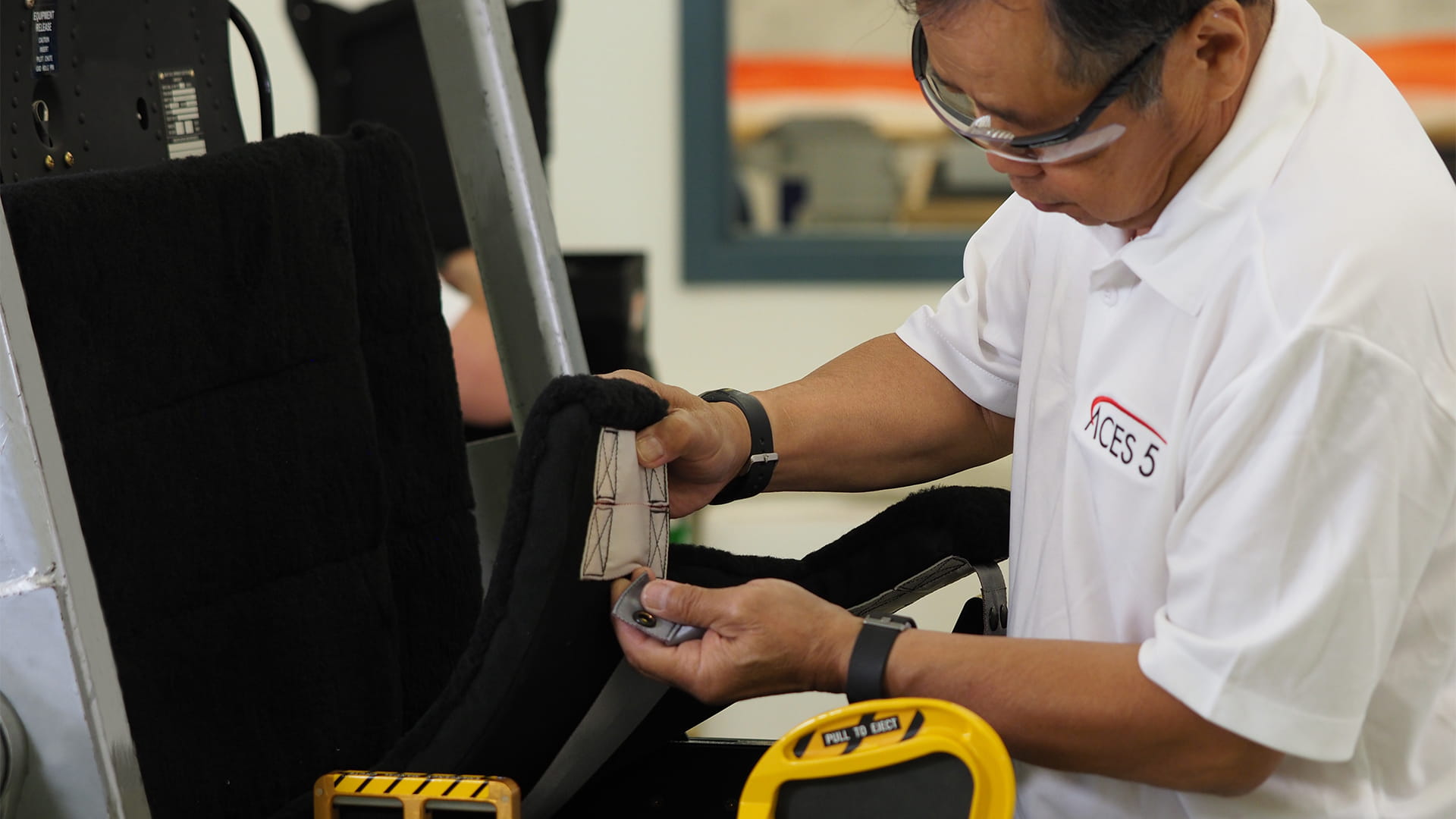What it takes to build an ACES 5 seat
June 30, 2018 - We’re in the business of saving lives. Designing and building safer ejection seats is our calling. Air Forces around the world depend on us, and so do the families of these intrepid airmen. When an aircrew is forced to eject, they, their families, and their countrymen and women trust we did our job perfectly and they are sitting in an ejection seat with the latest advancements and technology available.
Here at UTC Aerospace Systems, our team has a record of building and installing precision-engineered ACES ejection seats since 1978. And our team knows exactly how important each and every ejection seat is - because in some cases, our team members used to fly in them.
Our latest ACES 5® ejection seat is a product of years of research, investment, testing, and advanced design. But it is also a study in precision craftsmanship and teamwork. The Colorado Springs facility where these seats are built houses a craftsman’s tools, a prototype workshop for new design development, a parachute packing room, and thousands of square feet of manufacturing space.
It’s here where you’ll see components of aluminum, steel and titanium bolted together, and where composites fabricated for both comfort and function are mounted to seat buckets. Every single piece of the seat is essential, and all of it is made to withstand around 10 Gs of force during flight. But the most unique part of manufacturing comes at the end, when 10 pounds in energetics and propellants are installed in the seat.
To the untrained eye, parts of the process can look similar to building an automobile seat—but they aren’t. A loose bolt in your car isn’t likely to present a major issue; a loose bolt in your ejection seat can be fatal. That’s why we employ people who are uniquely qualified to support this program; some who used to fly in our very own ejection seats, and know exactly how important they are.
So what’s the secret to building a rugged, durable, high-tech ejection seat—a seat that needs to be trusted to save aircrew lives in the worst of circumstances? It’s having a team with unwavering, personal commitment to the safety of aircrew.
At UTC Aerospace Systems, our dedicated team includes veteran military aircrew, top project managers, supply chain gurus, precision engineers and skilled production personnel to get the job done. One of these team members is John Fyfe, our director of Air Force Programs—callsign "Barney."
A former F-16 fighter pilot, Barney first encountered the ACES family of ejection seats in the 1980s. "At that time, the success of ACES II® had just changed the norm; meaning that aircrew who ejected from an ACES II seat were typically walking away uninjured. Early on, there might have been more apprehension with flying single-engine aircraft. This changed rapidly, however. With a proven performance record, the ACES II seat quickly gained the trust of the Air Force fighter community and myself. We had total confidence in our ability to safely eject."
Ask an airman: of any system in an aircraft, your ejection seat is the most personal. Every fiber of your subconscious has to trust in the seat just so you can do your job. There can be no doubt, ambiguity, or any caveats. When Barney first began working at UTC Aerospace Systems, he wanted to ensure his friends still flying would continue to have that trust. With ACES 5, it’s even more personal. "Now we’re talking about our kids. They're getting ready to graduate college, to follow us, their parents, into the Air Force. This isn’t just another product. This is about knowing what’s better and making a seat that I want my child or friend to sit in, or my friend’s son or daughter."
Barney is just one member of a 75-person core ACES team with deep experience in designing, building and fielding ejection seats. Our ACES II ejection seats currently fly in the US Air Force’s A-10, F-15, F-16, F-22, B-1 and B-2 fleets, and in all F-15s and F-16s worldwide. Our team is also preparing to retrofit the ejection seats on the US fleet of B-2 "Spirit" stealth bombers, upgrading existing seats to our newest model—the ACES 5.
We want airmen to know that, if the moment comes when they have to make the split decision to put their life in the hands of an ACES 5 ejection seat, we have their back. They can count on our dedication, attention to detail, and commitment to making every seat with the utmost attention to quality.
Making ejection seats that save our airmen is important work, and our team is excited to build on a history of success—and take it to the next level.

